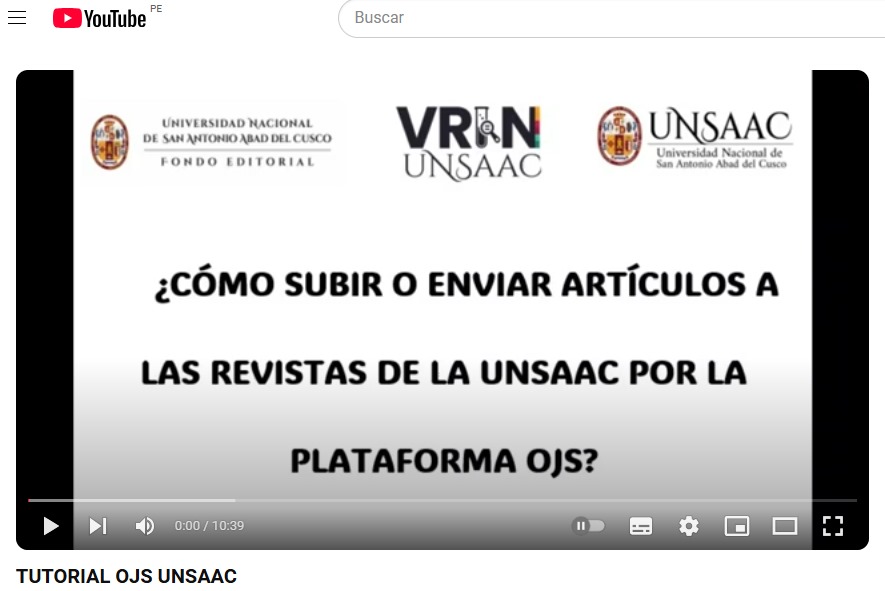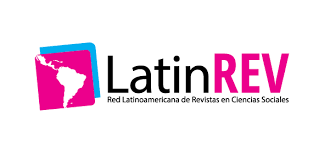El Acre-Purús y diversidad Cultural Fronteriza (Brasil-Perú)
DOI:
https://doi.org/10.51343/revtrascender.v1i1.1183Palabras clave:
Amazonía, Cultura, Fronteras, IdentidadesResumen
Las grandes cuencas hidrográficas del Acre, Purús y Madre de Dios, constituyen verdaderas “bisagras” entre Perú, Brasil y Bolivia, donde las personas son multilingües, bilingües o monolingües, hablando: portugués, español, quechua, yaminawa o manchineri-yine, quienes desde finales del siglo XIX, han ido “tejiendo” redes sociales y afectivas, surgiendo así familias “transfronterizas” y “transnacionales”. El objetivo de la investigación es estudiar dinámicas fronterizas desde las perspectivas culturales y sociales, al cual se pueden incorporar variables económicas y políticas. Desde los asuntos vinculados a las ciencias naturales y de salud pública, el abordaje de investigación es cualitativo, el método es el hermenéutico dialectico y la técnica es la revisión bibliográfica.Llegando a la conclusión que ellos, conocen a los demás que están al “otro lado”, “al frente”, pues, se sienten parte de dichas comunidades resultado de tales interacciones cultivadas en parte por las condiciones impuestas por el extractivismo-mercantil cauchero-shiringuero. Así en el seno de aquellas sociedades civiles fronterizas, se fue dando y proyectando hasta los tiempos actuales, la conjugación del ser, identidad (s), diferencias, desde la persona, comunidad local; y, hasta la comunidad local-internacional. Mientras tanto, el Estado, con el componente geo-político afirma la “identificación estatal”. Bajo aquellas características, la frontera alto acreana, es, un espacio de contacto, encuentro y de mutuas influencias, donde no se desestima –por acción del Estado- la protección, refinando cada cual, sus propias matrices de distintividad-comunidad, donde el telón de fondo, son las afinidades sociales e históricas que modelan a las culturas de frontera.
Descargas
Citas
Abínzano, Roberto Carlos (1996). Integración Regional Fronteriza. III Encuentro de científicos sociales sobre problemática regional. UNAM, UNIJUI, UNESCO. Posadas, Argentina. Globalización, regiones y fronteras. Documento de Debate Nº 27.UNESCO. (www.unesco.org/most/abinzano.htm / 12. abr. 2007).
Arteaga, Alfred (Comp.) Another Languaje: Nation and Ethnicity in the Linguistic Borderland. Duke University Press. 1994.
Ainsa, Fernando (2002). “La Frontera, ¿Límite protector de diferencias o espacio de encuentro y trasgresión?”. (En: M. G. Balaguer, E. Martinell,…2002, Barcelona).
Augé, Marc (2004). Los no lugares. Espacios del anonimato. Gedisa Editorial. Barcelona. (1998). Las Formas del Olvido. Gedisa Editorial, Barcelona.
Aurfuch, Leonor (2002) El espacio biográfico. Dilemas de la subjetividad contemporánea. “La Nación”, Buenos Aires.
Calderón, Héctor y José David Saldivar (edit.). Criticism in the Borderlands. Studies in Chicano Literature, Culture, and Ideology. Duke University Press. 1991.
Chandless, William (1867). Procedimientos de la Sociedad Geográfica Real de Londres, vol. 12, Nº 5. , (1866a.) Ascent of the River Purus, Royal Geographical Society of London. (1866b.) Notes of the River Aquiry, the principal affluent of the River Purús, Journal of the Royal Geographical Society, London, pp.119-128.
Da Cunha, Euclides [1909]. Amazônia: Terra sem história. Amazônia: Um paraíso perdido.
Sao Paulo. 2003. (1867). Perú versus Bolivia, Protesta del Perú. s/e.
Delboy, Emilio (1936). Desde el Madre de Dios: Frontera Movible que cambia de soberanía. Boletín de la Sociedad Geográfica de Lima. Tomo III, 1936. Conferencia a los miembros de la Sociedad Geográfica de Lima. Las Regiones del Madre de Dios y Acre. 21 de noviembre de 1912. Boletín de la Sociedad Geográfica de Lima, T. XXVIII. Trim. 3. El río Colorado, tributario meridional del Madre de Dios peruano. Boletín de la Sociedad Geográfica de Lima, T. XXVII, Trim. 1-2.
Delamata, Gabriela (2005). Ciudadanía y Territorio. Espacio Editorial, Bs. As.
Derrida, J. (1997). Notas sobre Deconstrucción y Pragmatismo. (En: Mouffe, Ch. Deconstrucción y Pragmatismo, Buenos Aires, Paidós).
Diaz Polanco, Héctor Díaz-Polanco (1987). Etnía, Nación y Política. Colección Principios, México D. F.
Dillehay, Tom y Patricia NETHERLY (comp.). La Frontera del Estado Inca. Abya Yala, 1998, Quito.
Erikson, Philippe (1998). Uma singular pluralidade: a etno-história Pano. In Cunha, Manuela Carneiro da. História dos Índios no Brasil. S. P.: Cia das Letras. PP. 239-252.
Foucault, Michael (1971), “Más allá del bien y del mal” en Microfísica del poder, Ed., La Piqueta, Madrid.
Geertz, Clifford. (2003).La Interpretación de las Culturas. Gedisa Ed. Barcelona
Gramsci, Antonio (31 de diciembre de 1978). Antología. Siglo XXI. p. 329. ISBN 9789682302572.HASSEL, von G.M. Jorge. (1905). “Apuntes de viaje en el Oriente Peruano. Imprenta y Librería San Pedro, Lima.
Grimson, Alejandro (2003). Disputas sobre las fronteras (En: S. Michaelsen, D. E. Johnson: Teoría de la Frontera, los límites de la política cultural. Gedisa Edit. Barcelona). (2000). (compilador).-Fronteras, Naciones e Identidades. La Periferie como centro. Ediciones La Crujia, Buenos Aires.
Hevilla, María Cristina. El Estudio de la Frontera en América. Una Aproximación bibliográfica. Biblio 3W. N°125 Rvta. Bib.Geografía y Ciencias Sociales. 2003.
Jociles, M. Isabel. (1995). La Identidad Étnica en las Zonas Fronterizas: reflexiones sobre la construcción sustancial del extraño. Revista de Antropología Murciana.
Lasoka-De La Rive Box, Bárbara / BOX, Loux (1988).- ¿Sociedad Fronteriza o Frontera Social? Transformaciones sociales en la zona fronteriza de la Republica Dominicana: 1907-1984. (En: Dembicz, A. t. II, 1988).
Lathrap, Donald (1970). The Upper Amazon. New York: Praeger Publishers
Lee, Gray R (1982). Family Structure and Interaction: A Comparative Análisis. University of Minesota Press, Minneapolis.
Lugo, Alejandro.- Reflexiones sobre la teoría de la frontera la cultura y la nación. (En: Michaelsen, S, 2003).
Martinell S. A./ Torres W. (2002). Cooperación cultural internacional y globalización. (En: Cooperación cultural Euroamericana, I Campus Euroamericano de Cooperación Cultural. Barcelona, España, 15 al 18 de octubre).
Michaelsen, Scott, David. E. Johnson (2003). Teoría de la Frontera, los límites de la política cultural. Gedisa Editorial, Barcelona.
Moncusi, Albert (2005) Fronteres. Identitats Nacionals i Integració Europea. Universitat de Valencia. Edit. Afers.
Moore, Thomas (1996). “La situación de los pueblos indígenas de la selva peruana frente a la prospección-explotación de hidrocarburos y recursos mineros en sus territorios”. Informe presentado a la OIT. Lima, GRADE
Olmos Aguilera, Miguel (2005). Antropología de las fronteras, Alteridad, historia e identidad más allá de la línea. El Colegio de la Frontera Norte. M.A.Porrúa, México.
Paredes Pando, Oscar . “Sociedad, Cultura y Fronteras. Espacios Sentidos y Deseados: Alto Acre Madre de Dios”. USAID-PEMD. Tomo III. ISBN 978-612-00-7-. Biblioteca Nacional del Perú. Alpha Servicios Gráficos. S.R. L, Cuzco, 2015, 412 páginas. “Explotación del Caucho-Shiringa: Brasil, Bolivia y Perú”. Amazonía Suroriental siglos XVI-II. Tomo II. ISBN 978612-46447-02. BNP. USAID-ICAA. Proyecto Especial Madre de Dios. Edit. JLG, Cuzco, 2013. 344. págs. “Antis y Montañas”. Tomo I (Segunda Edición. 2009, 2014) ISBN 978612-00-1713-56447-02. BNP. USAID-ICAA. Proyecto Especial Madre de Dios. Alpha Servicios Gráficos, S.R.L. Edit. JLG, Cuzco, 344s. páginas. Discursos, Memorias e Imaginarios Amazónicos desde el Alto Acre. Revista Universitaria N.º 140. Universidad San Antonio Abad del Cusco- 2008. “Los Bora: Poblaciones del Bosque Tropical”. U. Amazónica Madre de Dios. 2001.
Pérez Firmat, Gustavo (comp.), 1990. Do the Americas Have Common Literaturas. Durham, Carolina del N. Duke University Press.
Pärssinen, Martti y Ari Siiriäinen. (2008). Andes orientales y Amazonía occidental. Ensayos entre la historia y la arqueología de Bolivia, Brasil y Perú. Segunda Edición. Producciones CIMA, La Paz.
Piccoli, Jacó César (1993).- Sociedades tribais e a Expansao da Economía da Borracha na área de Jurúa e Purus. PUC-Sao Paulo. Brasil.
Podertti, Alicia (1998) Fronteras y Texturas: Procesos Coloniales en los Andes. (En: Sociocriticism. Montpellier. Centre´d´etudes et recherches sociocritiques. Universidad Paúl Valery, Montepellier, Vol. XIII, 1-2. Director Edmond Cross).
Sahlins, Peter (1987/1989). Repensando Boundaries (En: Grimson, A. /compilador. Fronteras, Naciones e Identidades. La Crujia, Buenos Aires).
Sosnowski, S. (1993). “Cultura, autoritarismo y redemocratización”, Revista de crítica cultural. Santiago de Chile (1990). Constitución y disolución de fronteras: una lectura de las zonas Hispanoamericana. Las Fronteras en la literatura hispanoamericana: sociales, culturales, étnicas y temporales. Génova. Fundación Simón I. Patiño).
Tocantins, Leandro (1979). Formación Histórica del Acre. Rio de Janeiro. Editorial Civilización Brasilera. Vol. I, II.
Wallerstein, Inmanuel (1988). “Abrir las Ciencias Sociales”. Reporte de la Comisión Gulbenkian para la reestructuración de las Ciencias Sociales. México. S. XXI.
Zusman, Perla (1999). “Representaciones, imaginarios y conceptos en torno a la producción material de las fronteras. Reflexiones a partir del debate Hevilla-Escamilla”. Rvta. Bib. Geografía y Ciencias Sociales. U. de Barcelona. Nº 149. /OPP-marzo23
Publicado
Cómo citar
Número
Sección
Licencia
Derechos de autor TRASCENDER PERÚ
Esta obra está bajo la licencia Creative Commons Reconocimiento CCBY 4.0 Internacional
Usted es libre de:
- Compartir: Copiar y redistribuir el material en cualquier medio o formato para cualquier propósito, incluso comercialmente.
- Adaptar: Remezclar, transformar y construir a partir del material para cualquier propósito, incluso comercialmente.


.png)









1.jpg)
.jpg)
.jpg)
.jpg)


